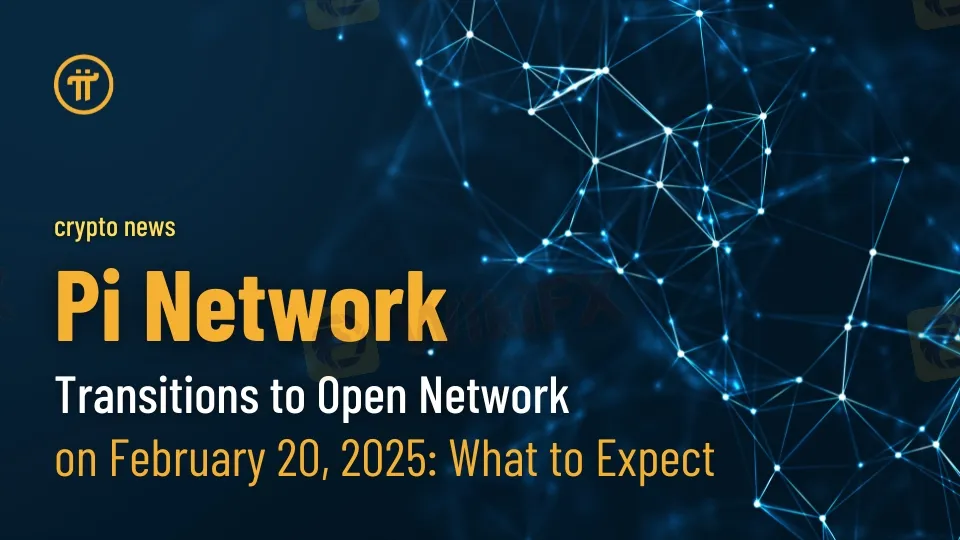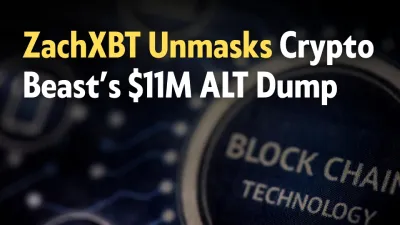简体中文
繁體中文
English
Pусский
日本語
ภาษาไทย
Tiếng Việt
Bahasa Indonesia
Español
हिन्दी
Filippiiniläinen
Français
Deutsch
Português
Türkçe
한국어
العربية
Pi Network Transitions to Open Network on February 20, 2025: What to Expect
Abstract:Pi Network officially transitions to an Open Network on February 20, 2025, enabling external connectivity and expanding Pi cryptocurrency's real-world utility.

Pi Network will formally move to the Open Network phase of Mainnet on February 20, 2025, following six years of unrelenting labor and community-driven milestones. This significant move ushers in a new age for Pi Network, bringing the aim of building the world's most inclusive peer-to-peer ecosystem closer to reality. Pi Network, with over 19 million identity-verified Pioneers and 10.14 million Mainnet migrations, is set to unlock a utilities-driven economy powered by its own cryptocurrency, Pi.
A Milestone Journey
Pi Network's path to the Open Network exemplifies the power of community collaboration. Since its start, the network has progressed through strategic stages, each adding to its strong basis. The current Mainnet Phase 3, which began with the Enclosed Network in December 2021, lays the framework for the Open Network. Pioneers completed KYC verification during this phase, developers created real-world apps, and the Core Team improved Pi's features and utilities.
In March 2022, a new mining reward issuance algorithm was implemented, which was a big milestone. This decreasing exponential approach balanced the network's development, accessibility, lifespan, and scarcity while assuring equitable rewards for Pioneer contributions. The Grace Period, implemented on July 1, 2024, boosted progress by rewarding Pioneers to complete KYC and migrate to Mainnet.
The Pi ecosystem's potential has already been proved by events such as PiFest 2024, which saw over 27,000 active vendors and 28,000 test merchants from 160 countries support Pi transactions for products and services. This event showed Pi's seamless integration of local business, from Map of Pi store findings to Pi Wallet payments and Fireside Forum social sharing.

What the Open Network Provides
The Open Network brings with it a game-changing feature: external connectivity. This implies that the layer-1 Pi blockchain will now interact with external systems, increasing options for both Pioneers and corporations. With the firewall gone, anybody can potentially add nodes to the Mainnet blockchain; but, the Core Team will prefer Pioneers with excellent history contributions and dependability rankings.
Participation in Mainnet activities will need KYC (Know Your Customer) authentication for Pioneers and KYB (Know Your Business) verification for companies in order to create a secure and compliant environment. This dual verification procedure intends to establish a safe Web3 environment in which certified Pioneers and enterprises may connect easily.
Open Network Conditions are Met
The Open Network will start if crucial requirements are met in December 2023. These are:
- Completion of Technology, Product, Business, and Legal Work: All of the foundations for a smooth transition have been completed.
- Milestones for the Community: Over 19 million Pioneers have passed KYC, and 10.14 million have transitioned to Mainnet, much exceeding the initial target. Furthermore, the network now has over 100 Mainnet or Mainnet-ready applications, enabling a lively and diversified utility environment.
- No Additional Delays: The Open Network launch will go forward as planned, unimpeded by outside circumstances.
How Pioneers and Developers Can Plan
As Pi Network reaches the Open Network phase, the active engagement of Pioneers and developers will be critical to its success. This is how you can contribute:
For Pioneers:
- Proceed with Wining: Align your mining efforts with the falling exponential issuance model.
- Participate using Pi Apps: Use Pi-powered applications to help the ecosystem and experiment with new utilities.
- Participate in Local Commerce: Encourage local businesses to accept Pi, promoting peer-to-peer transactions.
- Complete KYC and Migration: If you haven't already, make sure to complete your KYC and Mainnet migration.
For Developers:
- Refine Current Apps: Address user requirements and fix any issues to improve app performance.
- Build New Apps: Create new apps that cater to the Pi community and beyond.
The Future of Pi Networking
The Open Network's debut is more than a milestone; it is a step toward a decentralized and inclusive digital economy. Pi Network is poised to transform the way cryptocurrencies interact with real-world systems by permitting external connectivity. Pi Network will continue to be a sustainable, dispersed, and dynamic community, fostering innovation and utility in the Web3 domain, as Pioneers and developers interact.
Mark your calendars on February 20, 2025, and stay tuned for further details as Pi Network starts this exciting new phase. Together, we can create a world in which Pi underpins everyday transactions while also encouraging global economic inclusivity.

Disclaimer:
The views in this article only represent the author's personal views, and do not constitute investment advice on this platform. This platform does not guarantee the accuracy, completeness and timeliness of the information in the article, and will not be liable for any loss caused by the use of or reliance on the information in the article.
Read more

Dubai Police Arrests 4 People in Connection with High and Quick Profits Online Trading Scam
Dubai Police have arrested four individuals involved in defrauding many investors via fake online trading schemes that promised high and quick returns. Check out the arrests, international connections, and more in this story.

ZachXBT Exposes Crypto Beast’s $11M $ALT Token Dump Scheme
ZachXBT uncovers Crypto Beast’s $11 million pump and dump scheme, causing $ALT token’s crash and wiping out retail investors. Read the full investigation.

MFSA Warns of Digital Market Mining Scam: Alchemy Markets Clone
The MFSA warns that Digital Market Mining is a fraudulent clone of Alchemy Markets Ltd. Learn how to identify financial scams and protect your investments.

Licence Denied: Tokenize Quits Singapore After MAS Decision
The Monetary Authority of Singapore (MAS) has denied Tokenize Xchange’s application for a Major Payment Institution (MPI) licence, prompting the cryptocurrency platform to cease its operations in Singapore and shift focus to Labuan, Malaysia.
WikiFX Broker
Latest News
Is Your Forex Strategy Failing? Here’s When to Change
FSMA Warns That Some Firms Operate as Pyramid Schemes
Apex Trader Funding is an Unregulated Firm | You Must Know the Risks
Sigma-One Capital Scam? Investors Say They Can’t Withdraw Funds
Federal Reserve likely to hold interest rates steady despite pressure from Trump. Here's what that means for your money
WEEKLY SCAM BROKERS LIST IS OUT! Check it now
Intel drops 9% as chipmaker's foundry business axes projects, struggles to find customers
Palantir joins list of 20 most valuable U.S. companies, with stock more than doubling in 2025
Textiles to whisky: U.K.–India 'historic' deal is set to boost bilateral trade by over $34 billion a year
Thailand-Cambodia border clashes: Cambodia's economy has more to lose, analysts say
Currency Calculator


